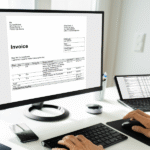Singapore and Malaysia share deep economic and social ties, with a constant flow of talent, trade, and investment between the two nations. Many individuals commute daily across the border for work, and businesses frequently operate in both jurisdictions. However, without proper tax agreements, this cross-border activity could become a financial burden, leading to income being taxed twice in both countries.
This is where the Singapore-Malaysia Double Tax Avoidance Agreement (DTAA) plays a crucial role. It ensures that individuals and businesses engaged in cross-border activities are not unfairly taxed twice, promoting smoother financial transactions and economic collaboration. For example, if a Malaysian works in Singapore, they pay tax in Singapore on that income. Thanks to the DTAA, Malaysia will grant a tax credit for the amount already paid, preventing double taxation and encouraging more seamless employment opportunities.
Why Double Tax Treaties Matter
Double taxation can arise when the same income is taxed by two different countries. This situation can dramatically increase the tax burden and deter international business and labour mobility. Tax treaties like the Singapore–Malaysia DTAA are designed to prevent this. For instance, consider a Singaporean investor who earns interest in Malaysia. Normally, Malaysia may tax the interest, and Singapore would also tax the same interest when received. Under the DTAA, Singapore allows a credit for the Malaysian tax paid, so the income isn’t taxed twice.
Another example: a Malaysian residing in Singapore earns a salary in Singapore and pays Singapore tax. When filing in Malaysia, the Malaysian tax authorities will give Singapore a credit for the tax paid on that same salary. Without the treaty, the individual might have to pay Singapore and full Malaysian tax, but the DTAA prevents that double hit.
In effect, the DTAA allows each country to limit its tax on various income streams and provide relief (like credits or exemptions) for taxes paid in the other country. This coordination eliminates duplicate taxation and lowers the overall tax load on individuals and businesses working internationally. As a result, both countries benefit from increased investment and trade. The Ministry of Finance in Singapore notes that the treaty “helps investors avoid the burden of double taxation” and “facilitates the crossflow of trade and investment”.
Key Features of the Singapore–Malaysia DTAA
The treaty defines key terms and covers various income categories. For example, Article 7 deals with business profits: such profits are usually taxed only in the company’s home country, unless the company has a permanent establishment in the other country. If it does, then that other country can tax the profits attributable to the PE. The DTAA contains similar rules for other income types. Among other things:
- Business Profits: Profits are taxed only in the country of residence unless the business has a permanent establishment (PE) in the other country. In such cases, only profits attributable to the PE are taxed there, with credit granted by the home country to avoid double taxation.
- Employment Income: Income from employment is taxed where work is performed. However, short-term assignments under 183 days (with specific conditions) are taxed only in the employee’s home country, avoiding tax duplication.
- Dividends: Dividends may be taxed in the source country, but the residence country must allow a tax credit, ensuring the same income isn’t taxed twice.
- Interest & Royalties: Withholding tax on interest is capped at 10% and on royalties at 8%, significantly lower than domestic rates—making cross-border financing and licensing more cost-effective.
- Technical Service Fees: The treaty limits withholding tax on technical and management services to 5%, providing clarity and predictability for service providers.
- Immovable Property Income: Income from real estate is taxed in the country where the property is located, with provisions to avoid double taxation through matching rules.
- Other Income: Unlisted income types, such as freelance earnings or capital gains, are usually taxed in the country of residence unless tied to a local PE or specific source-based rules.
Major Treaty Updates of 2006
Singapore and Malaysia had earlier tax agreements. An initial convention was made in 1966, and a comprehensive treaty was signed in 1968, followed by a supplemental protocol in 1973. The current DTAA (signed in 2004) replaced those older accords. It entered into force on 13 February 2006 and applies to income from 1 January 2007 onwards. This new agreement updated many provisions to reflect modern economic conditions. Key changes included:
- Reduced Withholding Tax Rates: The 2006 treaty lowered the caps on cross-border withholding taxes. For example, interest payments were capped at 10% (down from Singapore’s 15% domestic rate) and royalties at 8%. This reduction aligns the treaty with each country’s tax reforms.
- Defined Technical Fees: The agreement explicitly defined technical and other service fees and capped their withholding tax at 5%, providing clarity for cross-border service payments.
- Tax-Sparing Credit: To encourage investment, the treaty provided tax sparing for a transitional period. For the first ten years, if one country offers a tax incentive (like a holiday or allowance), the other country “spares” or credits the benefit when taxing foreign income. This ensures investors enjoy intended incentives even when repatriating profits.
- Dividend Tax Credits: The treaty formalised mutual tax credits on dividends as noted above. Essentially, both countries agreed not to impose additional tax on dividend income beyond what was already paid at source.
- Information Exchange and Dispute Resolution: The treaty mandates cooperation between tax authorities. Article 26 requires the authorities to exchange relevant tax information (under each country’s laws) to carry out the treaty and prevent evasion. Additionally, Article 25 provides a Mutual Agreement Procedure (MAP): if a taxpayer feels they have been double-taxed or treated incorrectly, their country’s tax authority can negotiate with the other countries to sort out the issue.
- Clarified Definitions: The treaty refined key definitions (like “company”, “permanent establishment”, and “business profits”) to keep pace with international tax standards. This reduces ambiguity in applying the rules to modern business models.
These updates have made the treaty more investor-friendly. As noted, the revised DTAA helps avoid double taxation and facilitates trade and investment. In practice, businesses and individuals on both sides benefit from clearer rules and lower tax barriers.
Practical Benefits for Businesses and Individuals
| Article | Provision | Details |
| 1 | Personal Scope | Applies to persons resident in one or both Contracting States. |
| 2 | Taxes Covered | Covers income tax in Singapore and income tax/petroleum tax in Malaysia. |
| 4 | Resident | Defines residency; for dual residents, tie-breaker rules based on permanent home, vital interests, habitual abode, nationality, and mutual agreement. |
| 5 | Permanent Establishment (PE) | PE includes fixed places like offices (>6 months for construction); it excludes preparatory activities. |
| 6 | Income from Immovable Property | Taxable in the state where the property is situated, including agriculture and related rights. |
| 7 | Business Profits | Taxable only in the residence state unless PE exists, then on attributable profits. |
| 8 | Shipping, Air, and Road Transport | Profits from international traffic are taxable only in the enterprise’s residence state. |
| 10 | Dividends | Withholding tax capped at 5% (≥25% capital) or 10%; taxable in both states. |
| 11 | Interest | Withholding tax capped at 10%; exemptions for approved loans, government entities. |
| 12 | Royalties | Withholding tax capped at 8%; taxable in both states. |
| 13 | Technical Fees | Taxable in the source state; withholding tax capped at 5%. |
| 23 | Elimination of Double Taxation | Credits allowed: Malaysia credits Singapore tax; Singapore credits Malaysian tax; including underlying company tax for dividends (≥10% ownership). |
| 24 | Non-Discrimination | Ensures nationals/enterprises aren’t taxed more burdensomely; excludes personal allowances for non-residents. |
| 25 | Mutual Agreement Procedure | Residents can present cases within 3 years if taxation is not as per the agreement; authorities resolve by mutual agreement. |
| 26 | Exchange of Information | Exchange for implementation, evasion prevention, with secrecy; no obligation against laws/trade secrets. |
| 27 | Prevention of Treaty Abuse (MLI addition) | Benefits are denied if the principal purpose is obtaining a benefit, unless in line with the objective. |
| 28 | Entry into Force | Effective 13 February 2008, tax effects from 1 January 2007; terminates the 1983 agreement. |
| 29 | Termination | Terminable after 5 years with notice by 30 June, effective next year. |
In day-to-day terms, the DTAA delivers concrete savings and certainty. Some scenarios illustrate its impact:
- Investing Across the Border: A Singapore company sets up a subsidiary or branch in Malaysia. The Malaysian branch’s profits are taxed in Malaysia (since it’s a Malaysian PE). When the profits flow back to Singapore as dividends, the Singapore parent company receives a credit for the Malaysian tax already paid. Without double taxation, the Singapore company only pays any difference in tax (if its Singapore rate is higher), but not the full Malaysian tax again.
- Selling Services: A Malaysian tech firm provides software development services to clients in Singapore. Under the DTAA, any technical service fees paid by the Singapore client are taxed at only 5% in Singapore. This lower rate makes such cross-border contracts more cost-effective and encourages firms to do business in the other country.
- Working Abroad Temporarily: A Malaysian engineer takes a one-year contract in Singapore. Singapore taxes the salary as earned income. However, Malaysia will allow a credit for the Singapore tax already paid, so that the engineer is not doubly taxed on the same salary. If the assignment were only 6 months, then under the treaty, Singapore wouldn’t tax it at all (due to the 183-day rule), so Malaysia would simply tax it as normal Malaysian-source income.
- Collecting Royalties: Consider a Singapore-based composer whose music is played on Malaysian radio. Under the treaty, Malaysia withholds 8% on royalties, and Singapore gives credit for that 8% against the composer’s Singapore tax. Thus, the composer’s global tax burden is minimised.
- Ensuring Correct Residency: If a person could be considered a resident of both countries, the treaty’s “tiebreaker” rules (based on factors like permanent home or habitual residence) decide which country is the resident for tax purposes. In practice, this means most people are treated as residents of only one country for tax purposes, avoiding conflicts and double taxation.
- Cross-border commuters: Many people live in one country and work in the other (especially between Johor Bahru and Singapore). The DTAA’s rules on employment income and tax credits ensure these commuters aren’t unfairly taxed twice. For example, if a Malaysian commuter pays tax in Singapore, Malaysia will give a credit on their Malaysian tax. This clarity simplifies tax filing for everyday workers.
In every case, the DTAA allows each country to claim the appropriate tax and then relieve it. Typically, the source country taxes the income at the treaty rate, and the home country gives a credit for that tax. By following these rules—reporting the foreign income and foreign tax on the domestic return—a person or company effectively pays at most one set of taxes on each item of income.
Using the Treaty: Procedures and Compliance
To claim DTAA benefits, taxpayers must be residents of either Singapore or Malaysia and provide proof—typically a tax residency certificate (e.g., IRAS or LHDN). For example, a Singapore company receiving Malaysian income must submit an IRAS certificate to Malaysian authorities, and vice versa.
Taxpayers must also report foreign income and any tax withheld in their local tax filings, then claim a tax credit for the foreign tax paid. Both IRAS and LHDN offer specific forms and guidance for this.
If a taxpayer believes they’ve been wrongly taxed, they can trigger the Mutual Agreement Procedure (Article 25), allowing both tax authorities to resolve the issue collaboratively.
In short: confirm residency, apply treaty benefits, file correctly, and keep proper documentation. The DTAA ensures cross-border income is taxed fairly and without duplication.
Conclusion
The Singapore–Malaysia Double Tax Avoidance Agreement (DTAA) is a key pillar of economic cooperation between the two countries. By capping withholding taxes (10% on interest, 8% on royalties, 5% on technical fees) and enabling tax credits for foreign taxes paid, the DTAA ensures that cross-border income is taxed fairly and only once.
For businesses and professionals, this means greater clarity, reduced tax burdens, and increased confidence in planning cross-border operations. As Singapore’s Ministry of Finance highlights, the treaty “facilitates the crossflow of trade and investment” and protects taxpayers from double taxation. Advintek supports businesses in navigating the complexities of international tax compliance. With deep expertise in cross-border digital solutions and regulatory frameworks, Advintek helps clients leverage DTAA benefits effectively—minimizing tax liabilities and fostering sustainable growth across Singapore and Malaysia.









